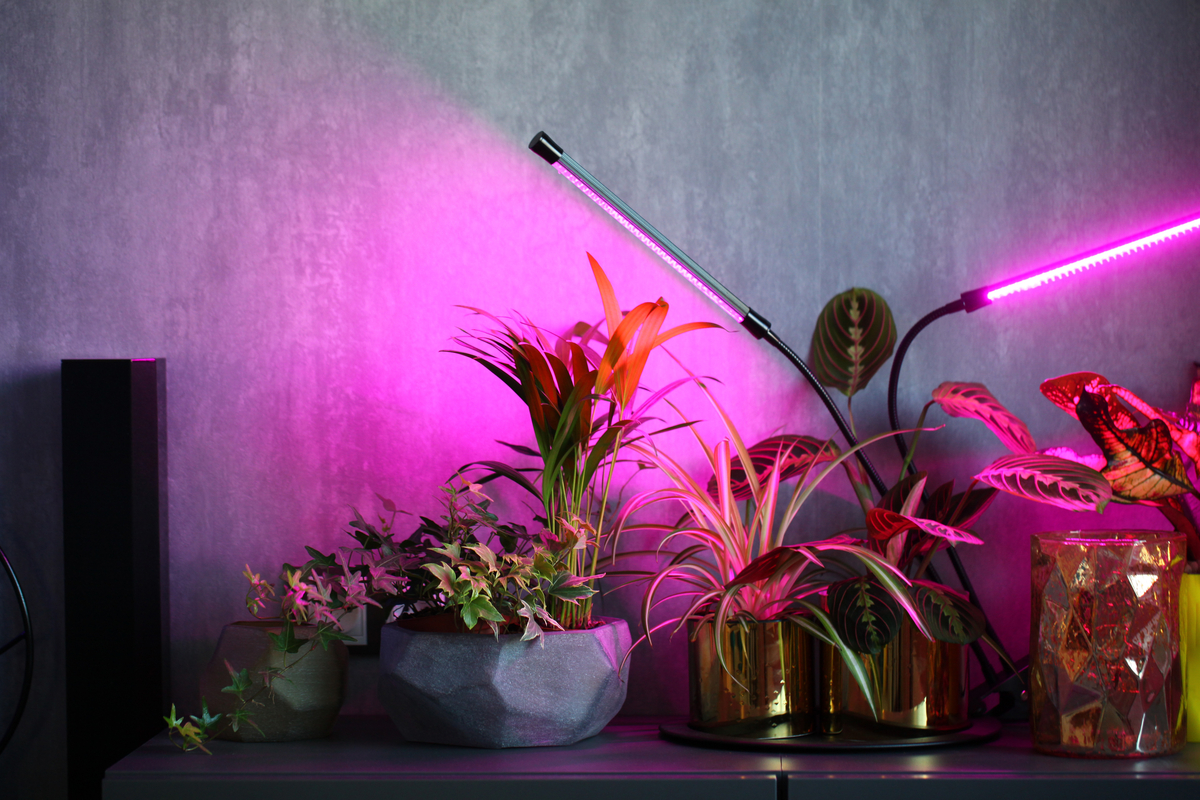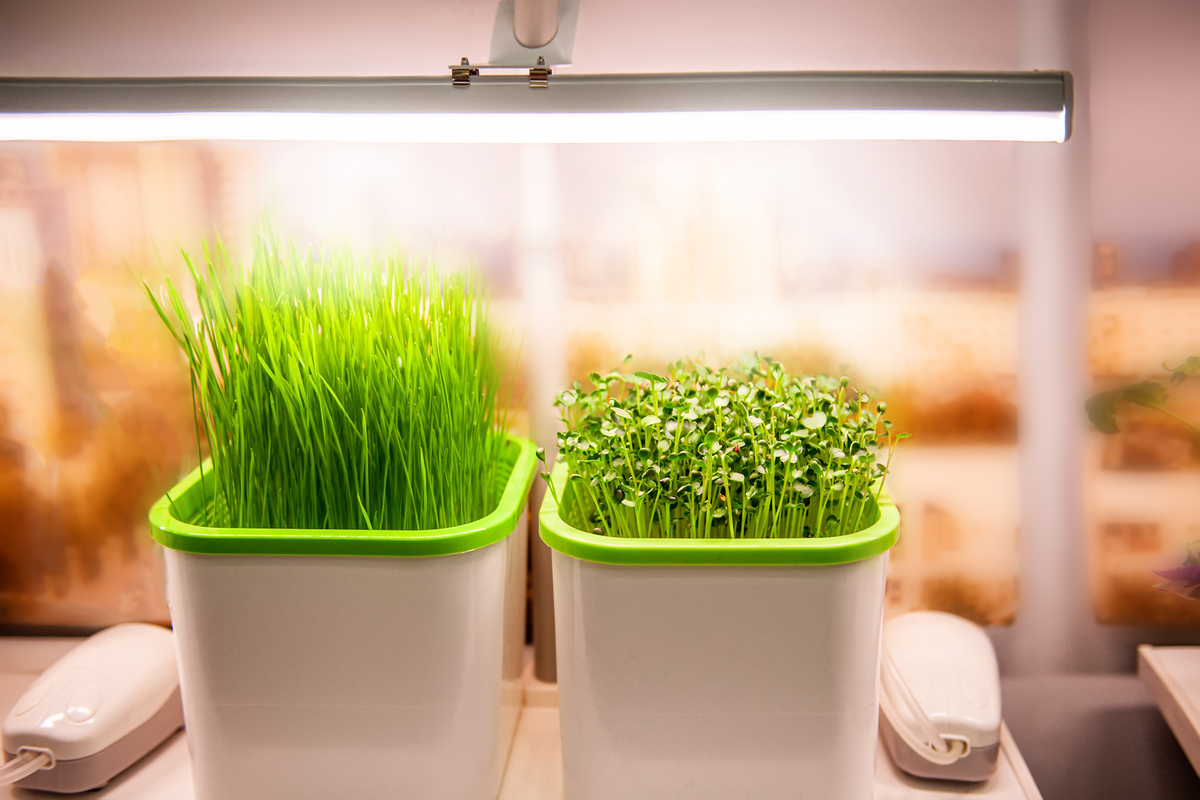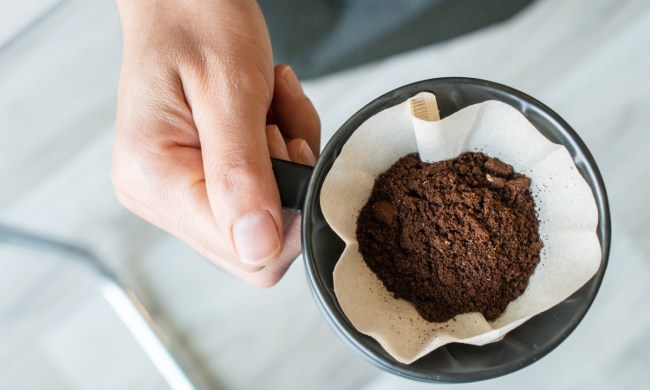Growing and nurturing plants, whether outdoors in a garden or as a decorative indoor plant display, is incredibly rewarding. There’s nothing like seeing your hard work produce growth results. Indoor gardening requires a different care routine than that of outdoor plants, though, and the biggest issue indoor gardeners face is lack of natural light. Grow lights help to address this deficiency for indoor plants, so we’re going to discuss why they’re needed and how to pick the best grow lights for your indoor plants.

Having indoor plants vs. indoor gardening
While indoor gardening is simply defined as growing live plants indoors, the term often refers to more than just keeping that office plant alive. Indoor gardening is a pretty general term, and includes:
- Growing vegetable plants or herbs indoors
- Starting seedlings indoors that will be transplanted outside in the spring
- Keeping indoor plants for decorative or recreational purposes
Why are grow lights needed for indoor gardening?
Plants need three things for the photosynthesis process: Oxygen, water, and light. The process converts these items into energy that makes the plant grow and produce. When plants are grown indoors, they don’t get nearly as much natural light as when they are grown outside. Grow lights keep indoor plants flourishing and growing, even during winter months.
What kind of light do plants need indoors?
While the sun’s light appears white or yellow to the human eye, it actually contains many colors, each providing a different benefit for plants. This mix of colors is referred to as “full spectrum” light. The two most beneficial light colors for plants are red and blue.
Red light helps plants to flower and produce fruit. It’s also essential while seeds are in the germination phase. Blue light is needed for chlorophyll production in the plant, which strengthens the plants’ stems and foliage. Having a full spectrum of light helps mimic the light of the sun, so using a grow light that combines both blue and red light is important for indoor plant growth. It’s important to figure out:
- How much light your plants require
- How many hours of light they prefer
- What type of light they need
Grow light technology
There are a lot of options when it comes to grow lights, all with their respective benefits and downfalls. Which light you choose for your indoor gardening purposes will depend on your space, your budget, and what your particular plants need.
Grow bulbs vs. lighting fixtures
One factor to consider is how your light will be housed. There are simple grow bulbs you can purchase, which are the most economical solution for indoor gardening. Simply replace the standard lightbulb in a lamp or ceiling light fixture and place plants under it. While this solution is cheaper, it’s less effective than a grow light fixture.
Grow light fixtures are designed for indoor gardening. They provide direct, even light to your plants at appropriate levels. You can also house multiple plants under one fixture, whereas a grow bulb is ideal for a single plant.
LEDs vs. incandescent vs. fluorescent lights
The final thing to consider when choosing a grow light is what type of light technology it uses. Each of the three most common types of grow lights vary in cost and effectiveness.
- Incandescent grow lights are the most wallet-friendly option, but they’re also the least effective. They put out limited levels of light, so they are ideal for indoor plants that require low light levels. Incandescent lights also put out a lot of heat, so they’re considered the least energy-efficient.
- Fluorescent grow lights are more energy-efficient than incandescent lights, and they offer a wider range of light colors. They do tend to be more expensive, but they’re ideal for vegetable seed starters and plants that require low to medium levels of light.
- LED grow lights are currently the most effective grow lights on the market. They generally have a full spectrum of light and are much more energy-efficient than the other two options.

Setting up a grow area
Once you’ve decided on the right grow light for your indoor garden, it’s time to set up your grow area. There are a few things to consider when deciding on a location, including where you’ll have adequate space as well as climate control and humidity levels.
How to place your grow lights
Your plants will be healthiest when they get light from directly above. Choose a space that will allow you to suspend the light above your plants, like a bookshelf. This position will mimic the angle that the plants would receive light from the sun.
Also, consider the amount of heat your light will give off and whether that heat will negatively impact your plants. Incandescent lights should be placed higher up than fluorescent and LED lights since they emit more heat. If you have multiple varieties of plants in your indoor garden, consider the light needs of each plant and group them accordingly.
How long should lights be on?
Plants actually need several hours of darkness every day. At night, outdoor plants go through the respiration process, which is when they process all the energy they consumed during hours of light. In general, most plants need around eight hours of darkness every day to break down energy. Check care instructions for each plant for how many hours of light it needs.
Your gardening hobby doesn’t need to end when the weather turns cold. You can have a thriving indoor garden as long as you have enough space and the proper tools. Grow lights are essential for indoor gardening, and with this guide, your plant babies will grow, flourish, and yield fruit, even without the light of the sun.



